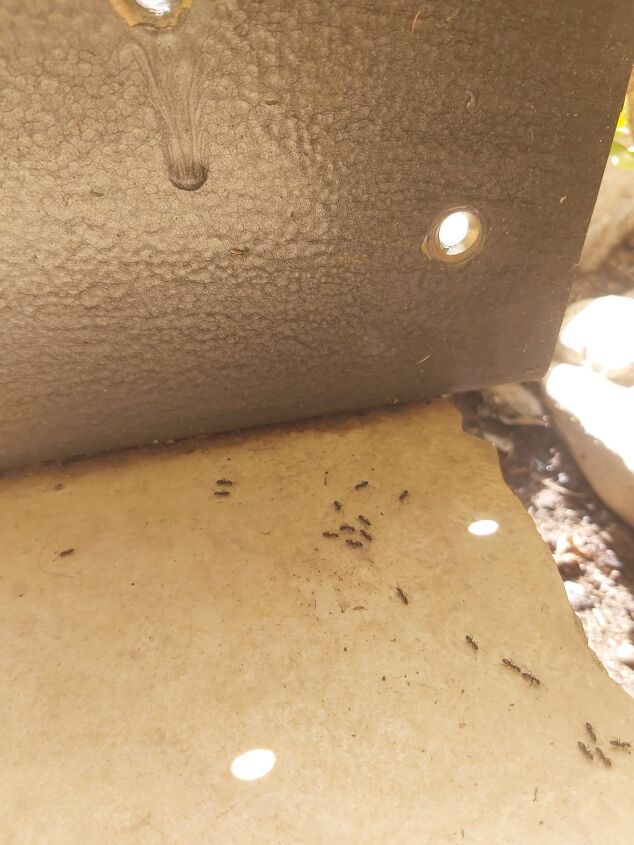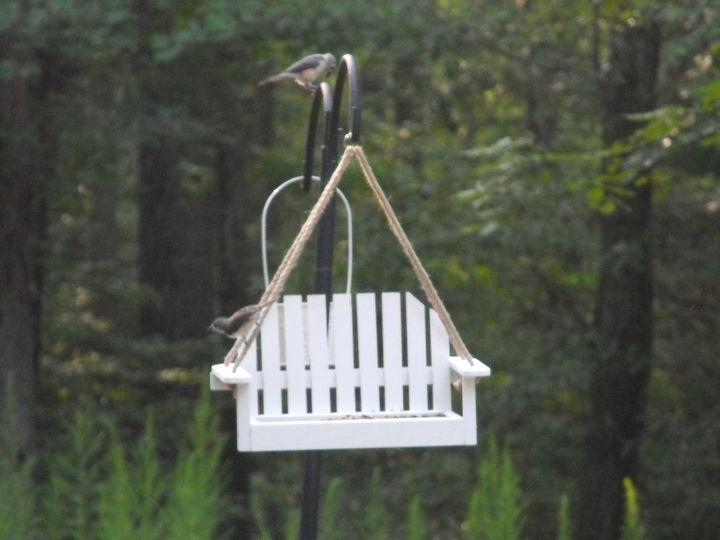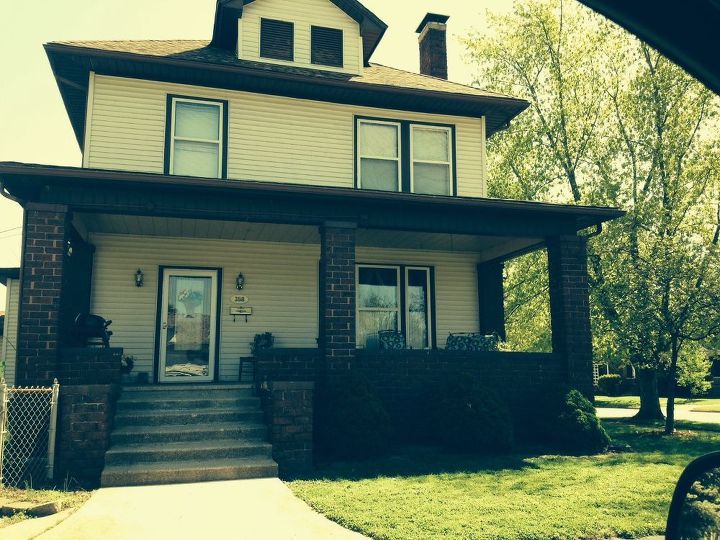I need information from someone about how a heat pump/air conditioning system works.

Now that it's winter I thought I'd be warm since it stayed so hot during the summer but I was wrong. Even when I set the thermostat on 58 the unit runs and runs and runs... The temperature in the house according to the thermostat has been at 68 for the past three weeks. I'm going to buy some indoor thermometers to see if I can pinpoint a particular place but the electric bill in this place is killing me.
Any help?
-
Hot in summer and cold in winter often go hand in hand with poor insulation. In the summer the house collects the heat much like how a car sitting in the sun can get really hot inside...solar gain is the primary cause there. In winter your heat is escaping through poorly insulated components. Ceiling and walls are common paths. In winter you are also subject to winds and general air leaks that can cause your heating system to work harder. From you previous post I saw that your little home is cinder block. Is it cinder block on the inside too? As far as heat pumps...they generally remove heat much like a refrigerator does using differential temps...in summer they "pull" the heat from inside and release it outdoors...In winter the "pull" the heat from outdoor and move it inside.
 KMS Woodworks
on Dec 28, 2012
Helpful Reply
KMS Woodworks
on Dec 28, 2012
Helpful Reply -
-
Schools in session! A heat pump is simply a AC unit that reverses itself. Think of a window AC unit. When it runs during the summer cold air is delivered into the home, while heat is pushed out side. If you were to take that same window unit and turn it around during the winter the cold air would blow outside while the heat blows in. That is the basics. However it is impossible to take a central air system and do that, So through what they call a reversing valve, Much like the transmission in your car. The flow of the refrigerant gasses are reversed so it works backwards. Making your inside coil work like the outside one and outside one work like the indoor. If a heat pump, or even a ac system is running correctly, you should expect to see around a 20 degree change in temp from where the house air enters into the fan system to where it blows out. This temp is taken right at the fan/coil unit. This number will change if you take measurements further away due to heat losses and gains. Also with a heat pump, while it is the most efficient method of making heat. As one BTU of energy used it delivers around 1.5 BTU of output. It does have one draw back. That is cold outside temps. Even though were cold at 40 degrees, there is still enough heat energy in the air for the heat pump to work. But once you begin to drop below that number, the ability of the heat pump to generate enough heat out of the system begins to drop. This is one reason why on heat pumps they have an 2nd Aux heat source. Most use an electrical heater element, some use a gas or oil furnace or other form of heat. But they all have one type or another. Also the heat that is generated out of the system tends to blow slightly cooler. Normal discharge temps from the heat pump is around 95 degrees. More then enough to make a home warm, but it does feel cool if the air is blowing on you. Because that air temp is not as hot as a furnace that blows out 120+ air you feel warmer when it hits you coming out of the grill. Also because is is cooler, it takes much longer for the room to warm up and more effort to keep the room warm when the outside temp drops. So to counteract that the system is designed to run longer. This oftentimes makes people think that something is wrong. Also if the air temp drops in the house faster then the heat pump can deliver it, the thermostat sees this and turns on the aux heat, i.e, electrical element or what ever type of aux heat is connected to the system. In addition because the system blows cold air outside, any dampness that surrounds the outdoor unit will freeze and ice the system up. When this happens the system goes into a defrost cycle. This in effect puts the heat pump back into the summer mode and uses heat from the house to melt the ice away from the system. When this occurs the AUX heat goes on so the cold air that would normally blow into the house is warmed up so you do not get a blast of cold air hitting you. In order for your heat pump to heat the house properly a few things must be going on. 1. The heat pump needs to be properly charged, this requires clean filters, coils etc. 2. The outdoor unit should be set up about six to 12 inches minimum off of the ground so any ice that melts or snow that comes down does not cover the outdoor unit making it impossible for it to generate heat to the house. 3. The air delivery system must be tight. No air leaks coming or going out of the blower cabinet. Particularly important if any of the ducts or system other then the outdoor unit is outside and not in the conditioned space. 4. The house must be sealed well. If there are lots of air leaks, that will cause the system to run all the time as all the heat and cooling energy is simply leaking out of the house. The sizing of the system is also critical. If it is not properly sized for the area it heats or cools that can result in issues as well. My first question I would have is what do you have? Is it a wall mounted unit much like you would find in a hotel? Or is it what is called a mini-split system where a blower is mounted on a wall with a 2nd unit set outside, or is it a central system where there is a blower perhaps in a closet, attic or basement with another unit placed outside. My bet is that the aux heat is not working as it should or the system needs to be charged. A way of telling that is if during the summer months when the AC was running for long periods of time, was condensate water being generated and draining outside somewhere? IF there was no condensate that is a sign of low gas and a leak. If the system could not generate enough heat out due to low gas pressures, the aux heat would be more then enough to keep you comfortable. Lastly if the system is undersized for the home/room then that too would cause it not to be able to warm it up cool it down.
 Woodbridge Environmental Tiptophouse.com
on Dec 28, 2012
Helpful Reply
Woodbridge Environmental Tiptophouse.com
on Dec 28, 2012
Helpful Reply -
-
Wow! So much information! Thank you both for responding. So, it seems, the bottom line is that there IS only about a 20 degree difference. The unit I have has one part in the attic and one part outside. All of the outer walls are paneling and based on the one piece that keeps falling off there isn't much insulation between the paneling and the cinder blocks. It's really old and falling apart but it looks to be about a 1/4 inch thick. I have noticed that the green light for AUX heat comes on quite frequently but I really didn't know what that meant. I'm not really sure I do even after the explanation. It had not occurred to me to go outside and look to see if the unit had ice on it but I'll try to remember to check that next time. I have been hanging beach towels and blankets over the windows to help keep the cold out/heat in. I have considered putting plastic up but am concerned with the money it would cost as well as the fact that the windows are already rotted from the humidity/condensation. Previous tenants used plastic over the windows judging from the hundreds of staples I pulled out of the frames. and I suspect that trapped the moisture in between even more, contributing to the rotting wood. I have a small electric heater in the bathroom and I keep that door closed. I have a medium one in the bedroom and keep that door closed plus a friend gave me an electric blanket for Christmas :-). The biggest area is the living room/kitchen combo. I saw a large room electric heater at Walmart for $60 but I'm not sure how much electricity it would use. I'm at a loss. Would I be better off shutting off the central system completely and using electric heaters? Which way should I go? Again, thank you both for responding.
 Dena H
on Dec 28, 2012
Helpful Reply
Dena H
on Dec 28, 2012
Helpful Reply -
-
You have a traditional split type system. My first suggestion would be to check to see that the air ducts are tightly sealed. No air leaks at any joints or connection points. More important is the air that flows back to the unit as it will draw cold attic air making even harder to warm up your space. This would also make it difficult to cool also in the summer. Once that part is sealed, and the supply to the rooms are sealed, then insulate really well. This all can be done on your own.
 Woodbridge Environmental Tiptophouse.com
on Dec 28, 2012
Helpful Reply
Woodbridge Environmental Tiptophouse.com
on Dec 28, 2012
Helpful Reply -
-
If I were to tackle this I would strip the paneling down and install 1 1/2" rigid "blue" foam on the walls this stuff also works well as a vapor barrier which would help with your condensation troubles. Unfortunately this is somewhat invasive and the "payback" will take some years. This is one of those problems renters face...why spend big buck fixing up the landlords "investment"
 KMS Woodworks
on Dec 29, 2012
Helpful Reply
KMS Woodworks
on Dec 29, 2012
Helpful Reply -
-
I'll see what I can do about patching leaks. Thank you both.
 Dena H
on Dec 29, 2012
Helpful Reply
Dena H
on Dec 29, 2012
Helpful Reply -
-
While I agree with KMS on the foam thing, You must remember not to leave any of the foam exposed to the living area of the home. Foam can easily burn and give off very toxic chemicals. Also some EPS board can out gas chemicals as well. And living in a small home such as yours this can make you quite sick.
 Woodbridge Environmental Tiptophouse.com
on Dec 30, 2012
Helpful Reply
Woodbridge Environmental Tiptophouse.com
on Dec 30, 2012
Helpful Reply -
-
Good post. A heat pump is simply an AC unit that reverses itself .In the summer, the system takes heat from inside the house and releases it outside…leaving the house cooler.In the warmer months, the heat pump acts like an air conditioner, removing heat from the air inside your home and transferring it outside. A central heat pump helps maintain comfortable temperatures inside your home and reduces humidity levels year-round.
 Jay Taylor
on Jun 02, 2014
Helpful Reply
Jay Taylor
on Jun 02, 2014
Helpful Reply -
Related Discussions
How do you use washi tape?
Looking for ideas on how to use washi tape for DIY projects and crafts.Do you use it on notebooks, gift wrap, and journal pages?How about decor pieces and organizing ... See more
Is washi tape recyclable?
I'm moving to a new place and taking down my renter-friendly washi tape decor when I thought... wait, isn't this just paper? Can I chuck the washi paper in the recycl... See more
Can you write on washi tape?
I have some gorgeous translucent washi tape and I want to use it to label items. Has anybody written on washi tape before? If so, what type of pen/ink works best to s... See more
How effective are bay leaves for ants?
I'm dealing with a terrible ant infestation, and I heard that bay leaves can be a great way to keep them away. Do you know if that's true? If it is, how can I use bay... See more
Does anyone have any good suggestions on how to keep squirrels out of my bird feeders?
I have tried the crushed red pepper in the bird seed, and have tried putting vaseline on the pole that holds the feeders....any other suggestions? I will at times hav... See more
How to clean a mirror without streaks?
Every time I clean my mirrors, they end up having tons of streaks and almost look worse than before I started. What could I use to clean them that won't leave streaks... See more
How can I inexpensively add some "wow" to my very brown/tan house?
My house is 100 years old and rock solid but it is bland. It needs someone's creative suggestions!



